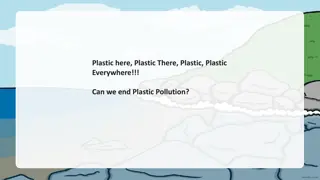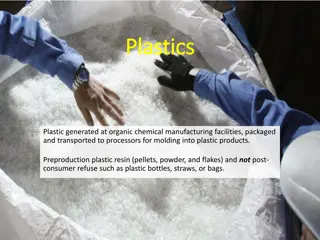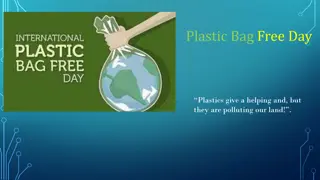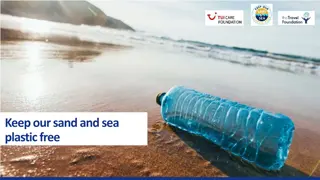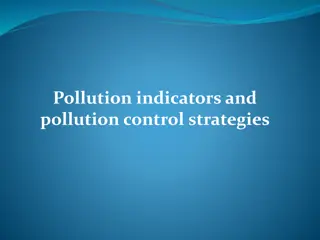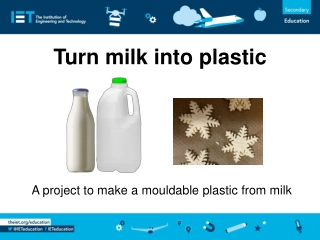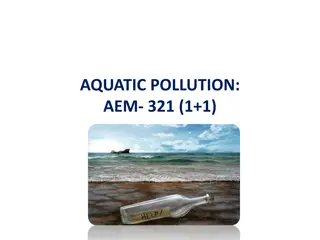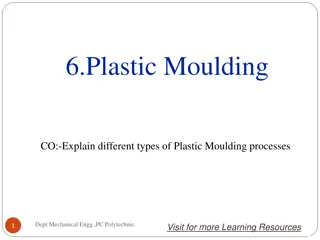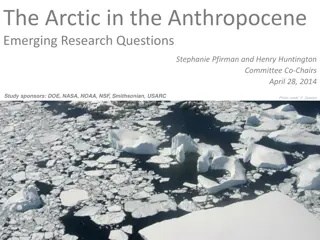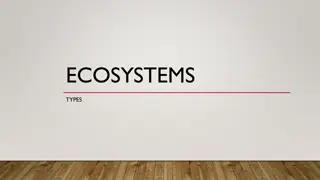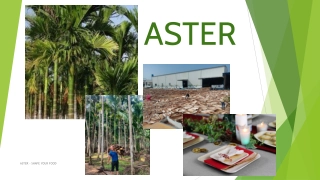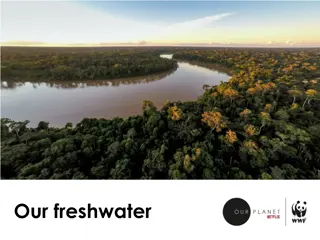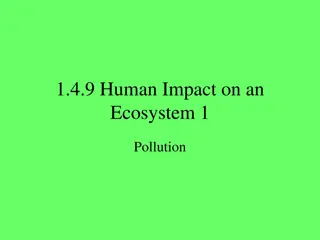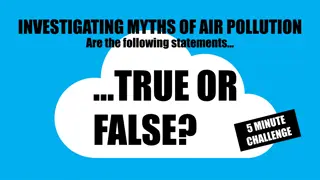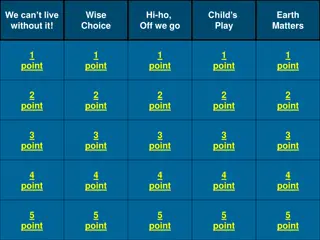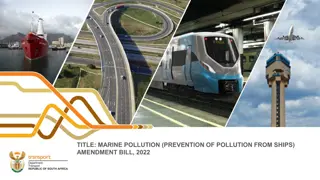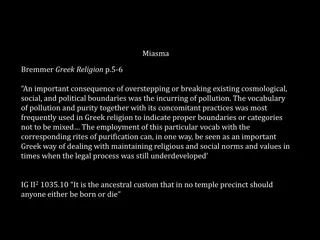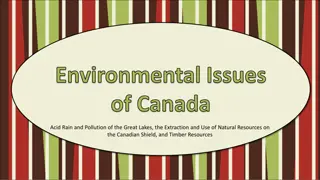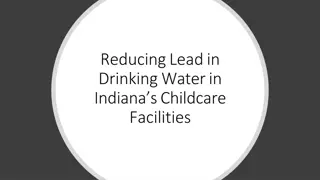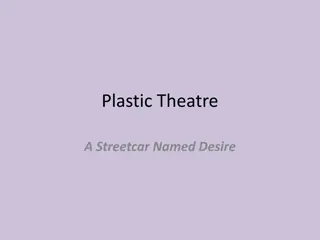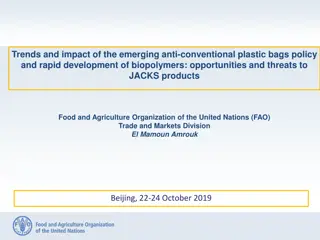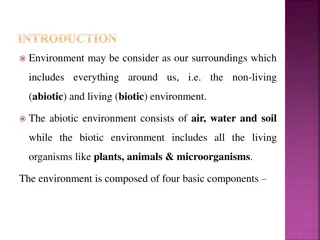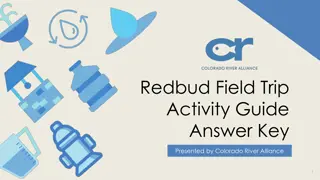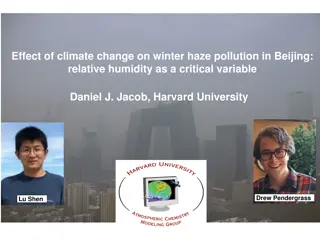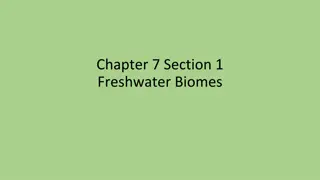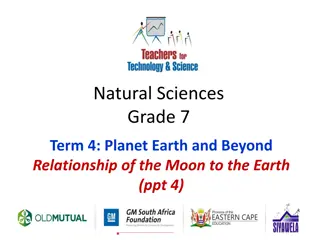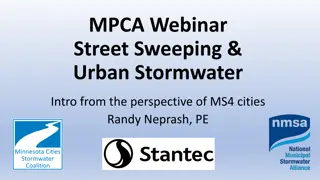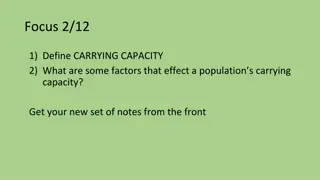Plastic Pollution Awareness: Exploring the Impact of Anthropocene on Ecosystems
Delve into the detrimental effects of plastic pollution on ecosystems in the Anthropocene era, understanding its causes, implications, and ways to mitigate the environmental harm caused by plastic waste.
Download Presentation

Please find below an Image/Link to download the presentation.
The content on the website is provided AS IS for your information and personal use only. It may not be sold, licensed, or shared on other websites without obtaining consent from the author. Download presentation by click this link. If you encounter any issues during the download, it is possible that the publisher has removed the file from their server.
E N D
Presentation Transcript
Starter Task On the post-it note, write down a ONE sentence definition of the Anthropocene.
The Anthropocene Lesson 1. Bioaccumulation
Lesson 1. Bioaccumulation Learning Goal: Explore how plastics enter the environment and move through a food web, threatening ecosystems and living organisms in the process.
Task 1. All About Plastic! 1. Why is plastic useful or important? 2. When does plastic become pollution? 3. How does plastic get into the environment? 4. What are micro-plastics? 5. How can micro-plastics hurt land and water animals?
All About Plastic! Why is plastic useful or important? Plastic is versatile and can be physically and chemically altered to serve many purposes. It is durable, lightweight, sanitary and cost-effective to produce.
All About Plastic! When does plastic become pollution? When plastic starts to accumulate in an area, causing harm to plants, wildlife, humans and the environment, it is considered pollution.
All About Plastic! How does plastic get into the environment? A few of the many examples include when plastic is improperly discarded, is picked up by wind or water, is ingested by an animal, or falls off our clothing or cars.
All About Plastic! What are microplastics? Microplastics are small fragments of any kind of plastic that are 5 millimetres or smaller, such as clothing strands, microbeads and broken pieces of larger objects.
All About Plastic! How can plastics hurt land and water animals? Plastic is generally safe in its original form, but when it is broken down and ingested by animals, over time it can release toxins that are harmful or poisonous.
Task 2. Gigapixel Activity 1. Visit this webpage. 2. Explore the plastics on the image. 3. Identify any sources of primary micro- plastics (particles that are intentionally manufactured in this size for use in cosmetic products). 4. Identify any sources of secondary micro-plastics (when larger plastic products such as plastic bags or bottles break down into smaller plastic pieces).
Task 3. Bioaccumulation We are going to act out how micro- plastics bioaccumulate in the bodies of animals that together form a food web and how micro-plastics biomagnify in that food web. The setting will be an ocean because micro-plastics tend to be more abundant in aquatic environments.
Task 3. Bioaccumulation You have all been given different roles: 1. Zooplankton 2. Fish 3. Seals 4. Sharks
Round 1. 1. If you have a Zooplankton Role Card you have 10-15 seconds to graze on or eat the phytoplankton. To eat a phytoplankton you must pick up a chip - bend down, pick up one chip, stand up, and then place it into their cup. 2. You are not allowed to take handfuls of chips at a time. 3. You must follow your Life Card instructions.
Round 2. 1. Zooplankton can continue feeding on the phytoplankton, but now be aware of predators. 2. If you are tagged, you must hand their food bag or cup to the student who tagged them. 3. If you have a Fish Role Card then you have 10 seconds to eat the Zooplankton (by tagging on the elbow). 4. Follow your Life Card instructions.
Round 3. 1. Now the larger fish are involved. 2. If you have a Seal Role Card then you now have 10 seconds to eat the small fish. 3. Eat the small fish by tagging the elbow of the person. 4. If tagged, the small fish must hand their food bag/cup to the student who tagged them. 5. Follow your Life Card instructions.
Round 3. 1. Now we are going to introduce the top dog in the system! 2. If you have the Shark Role Card then you now have 10 seconds to eat the seals. 3. Eat the Seals by tagging the elbow of the person. 4. If tagged, Seals must hand their food bag/cup to the student who tagged them. 5. Follow your Life Card instructions.
Task 3. Game Reflection Questions Identify one or more carnivores from the ecosystem brainstorm or bioaccumulation game. 1. Identify one or more herbivores from the ecosystem brainstorm or bioaccumulation game. 2. Which group contains the greatest amount of energy in a food chain? 3. Describe how bioaccumulation works. Use examples from the bioaccumulation game. 4. Describe one action that can be taken to reduce bioaccumulation from occurring locally. 5.
Task 4. Biomagnification Game 1. Visit this website. 2. Read the instructions and play the simulation game. 3. When you have finished the game, answer the questions outlined on the following slides.
Task 4. Questions 1. Define bioaccumulation. 2. Define biomagnification. 3. Describe the food chain illustrated in the simulation. How do toxic chemicals like mercury move from land sources through this chain? 4. What happens to the seabird if it feeds exclusively on clams? On fish? If it has a mixed diet? Explain these results. 5. Why don't all the clams or all the fish in the simulation have the same concentration of mercury?
6. What feeding strategies minimize the build-up of toxic chemicals in the seabird? How might this affect the population structure of clams, fish, and birds over time? 7. The greatest concentration of mercury is in sea floor sediments. How might the presence of mercury in the food chain shown be affected if sea level rises or falls? What about if the harbor is dredged so ships can dock right at the factory? 8. Sea life is an important human food resource. How does biomagnification impact the safety of seafood? How can humans who eat clams and fish minimize their exposure to chemicals such as mercury?


